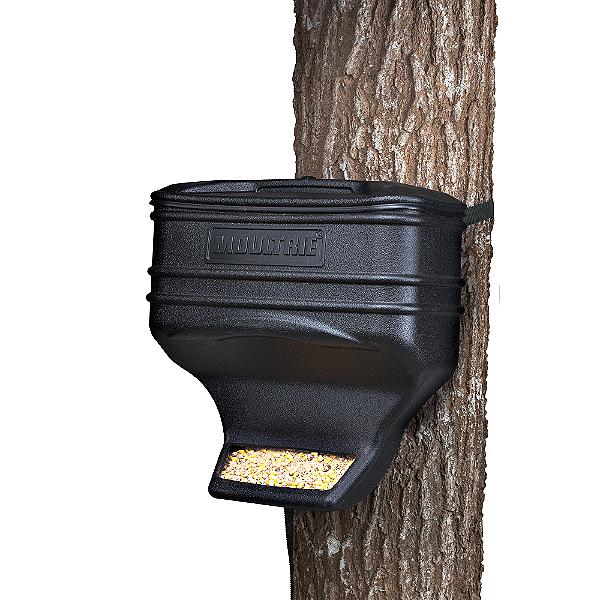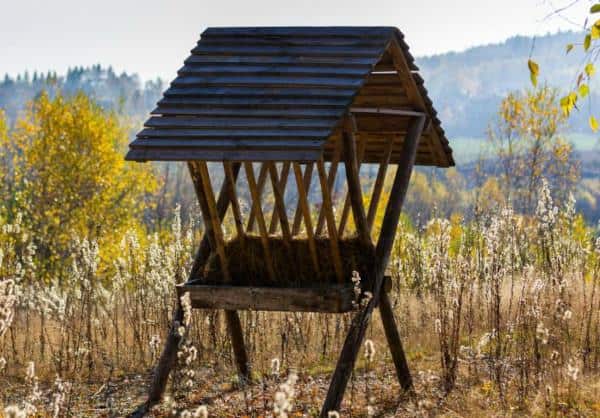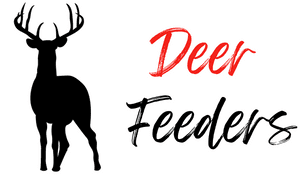When you start shopping for a deer feeder, it’s not going to take you very long to figure out that there a significant number of deer feeder models on the market, and every model offers a different method of feeding, along with different features. Now, depending on your specific needs, not every feeder is going to work for you. Some will end up potentially being “too much” feeder, while others may not offer the specific features that you want.
So, before you start deer feeder shopping, let’s help you get better educated on deer feeders.
While there are a number of different styles of deer feeders on the market, for the most part, deer feeders can be loosely categorized into three distinct types of feeders:
- Gravity Feeders
- Broadcast Feeders
- Trough Feeders
Let’s look at each style in more detail:
Gravity Feeders
This type of feeder is the more basic of the two types as it relies on gravity to get the deer food dispersed out for feeding. Gravity feeders can range from very simple to operate, all the way up to the more complicated models with a number of feature-based bells and whistles.
As with any feeder style, gravity based feeders have a number of good and bad points. The two biggest disadvantages to gravity based feeders include:
- Tend to have a smaller feed capacity compared to other styles
- Are easily accessed by squirrels and raccoons, who consume the feed.

Broadcast Feeders
Broadcast feeders are also known by a number of other names, including spin feeders, spinner feeders, whirley feeders, etc. This type of feeder uses a broadcast action (which normally consists of a cup that spins) to throw food out across a wide area. Like a gravity feeder, broadcast feeders can also range from the very simple models, all the way up to models that are powered by solar-based electricity and run on a timer.
The broadcast style feeders are the most common and most popular style on the market.

Trough Feeders
Trough based feeders are fairly self-explanatory as they feature a trough where you load food into for deer to feed on. While some hunters use trough based feeders, most trough feeders that are commercially sold are really more geared towards the wildlife fans who are feeding deer in their backyard.

Now that we’ve covered the three most basic types of deer feeders, it’s important to also go over the different styles of feeders:
Feeder Styles | Images |
Bag Feeders Very much like their name, a bag feeder uses a bag to store the feed, and then some usually either gravity or broadcast to disperse the food. Bag feeders can typically be mounted to either the side of a tree or post or also be mounted in a hanging position. Bag feeders offer a number of pros and cons, but the biggest advantage being their ease of transportation and set-up. Their biggest con is the fact that the bag itself offers little protection from other animals who also like to dine on the feed, and the size of the feeder bag plays a role in how often it has to be refilled. | |
Tripod Feeders Tripod feeders are probably the most popular feeder style for hunters and feature a feeder mounted atop a tripod. The feed is normally dispensed either via gravity or via a broadcast action. | |
Hanging Feeders
| |
Stump Feeders
| |
Homemade Deer Feeders
|
At the end of the day, you have to decide which deer feeder style works best for you and that decision will come down to a number of factors such as:
- What’s the reason for providing the deer supplemental feed?
- How often will you be able to refill the feeder?
- How much land or area are you trying to cover with a feeder?
- What’s the deer population in the area you plan to feed?
- Is it legal to feed the deer in your state? If so, what are the restrictions on that feeding?
- Will you be servicing and refilling the feeder alone or do you have help available?
And I’ll get deeper into each of those factors throughout the site.








